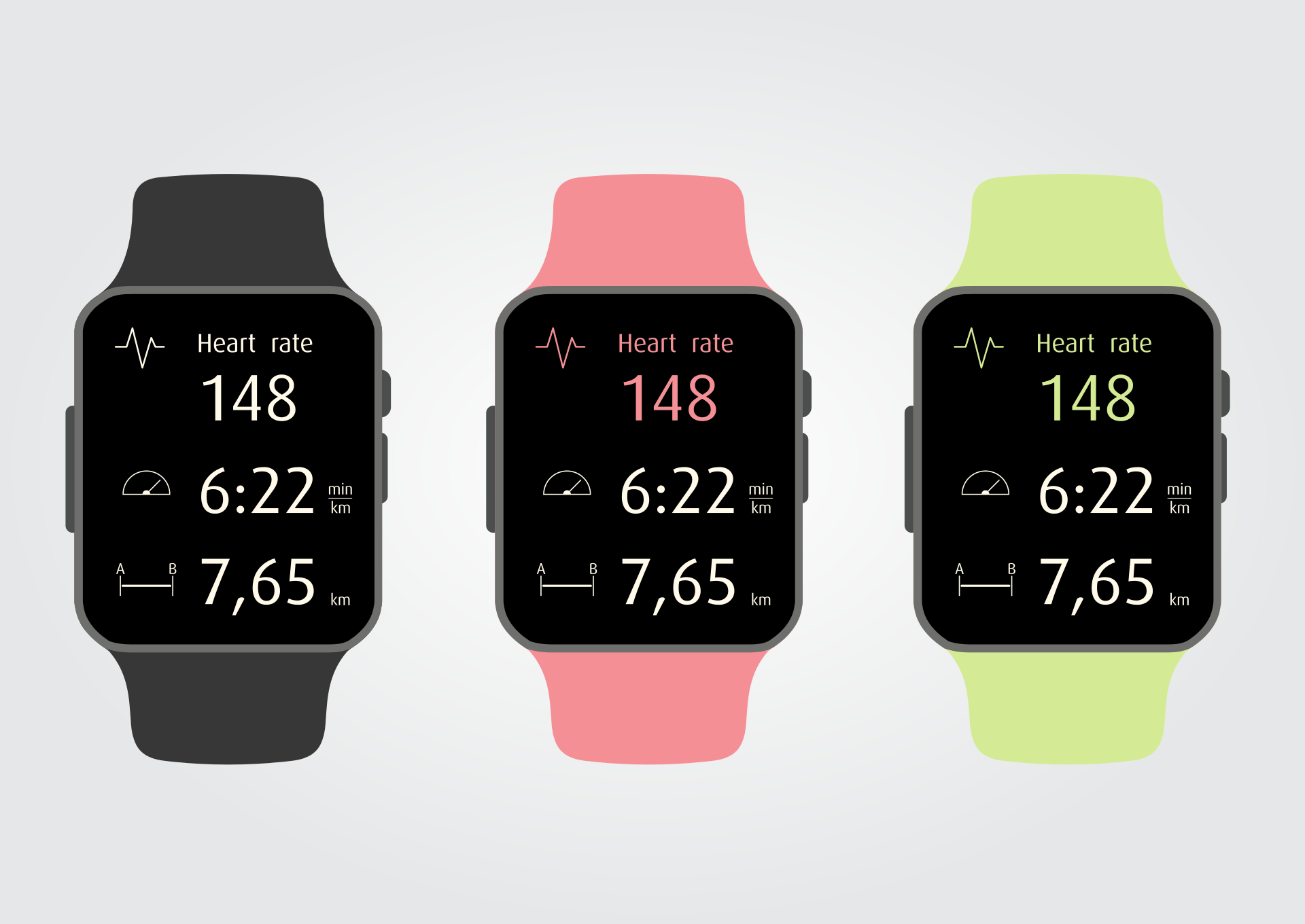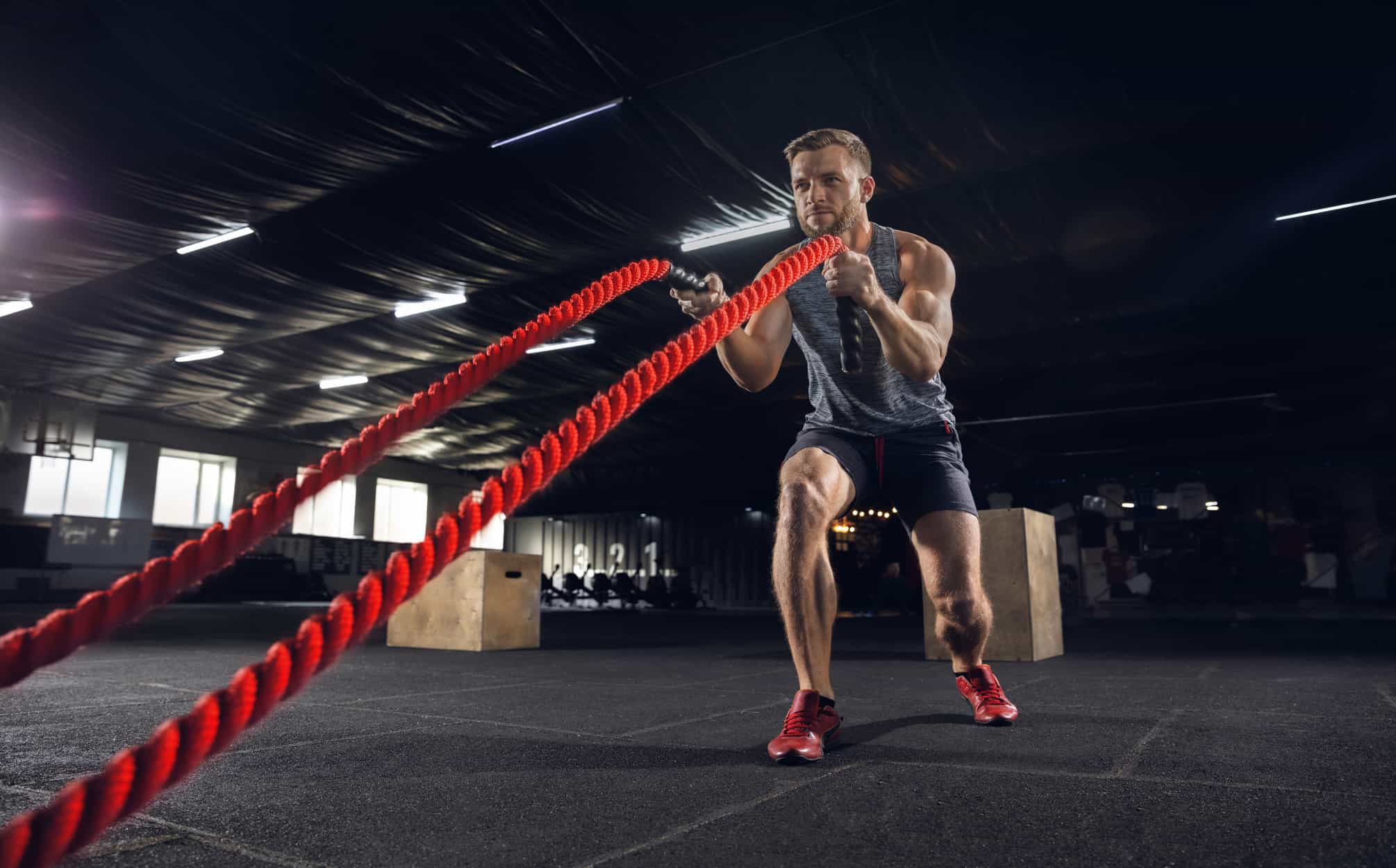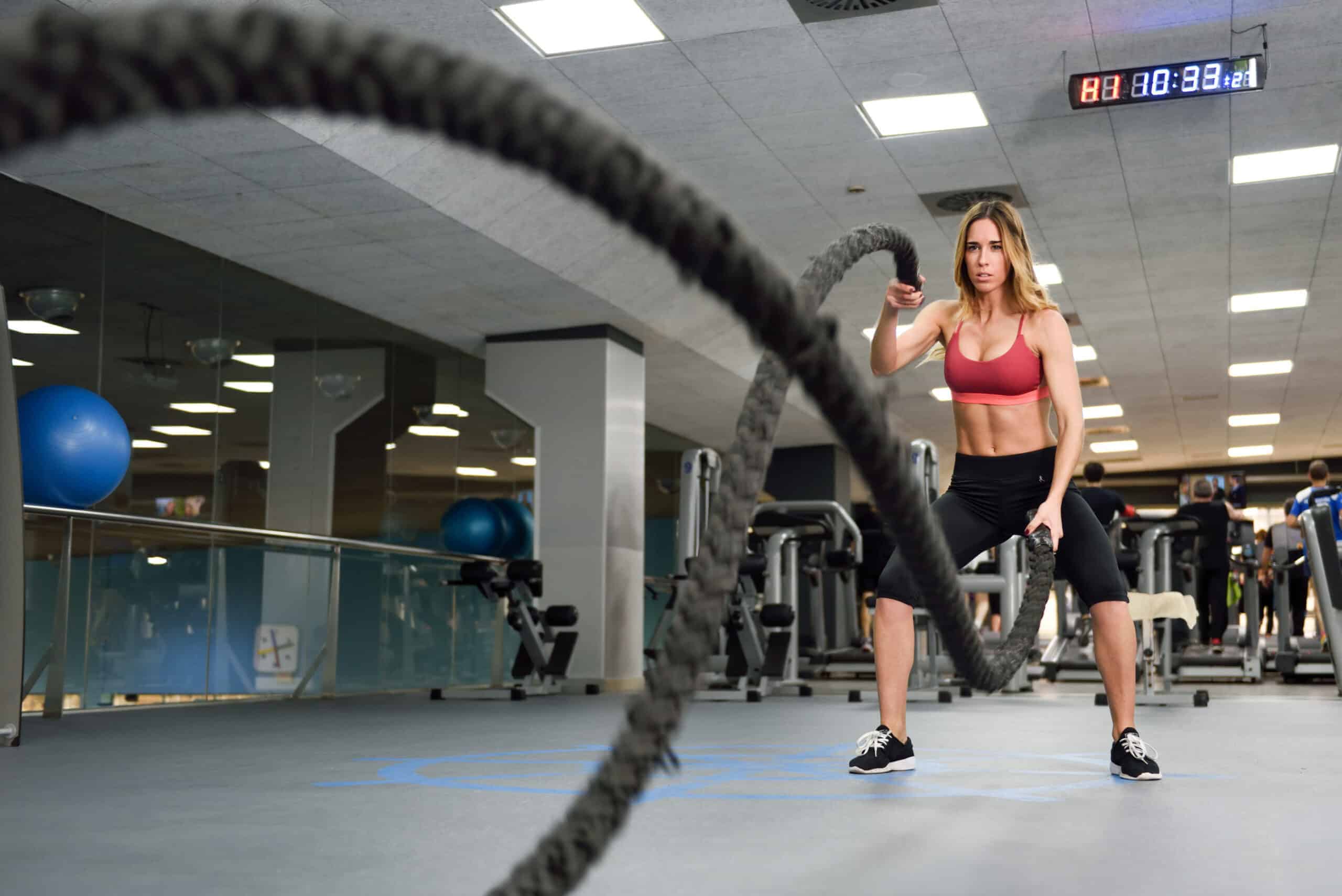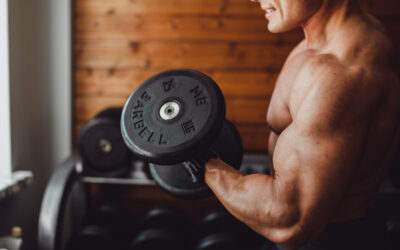Battle ropes exercises have become popular training modality in fitness centers. These physically demanding exercises are known to enhance athletic performance.
Well, you might wonder, what is battle ropes training exactly?
Undulation training or battle ropes training is the use of large and heavier ropes in workout sessions. These ropes generally come in between 9m-15m. Integrating battle rope exercises in fitness programs help strengthen arms, abs, shoulders, legs and develops overall body power production.
UNDULATION TRAINING VARIATIONS
There are many options and variations when doing rope undulation. You can move your upper body only by maintaining an isometric quarter or half-squat position, or you can also simply engage the musculature of the core and the lower body by incorporating jumps, squats and lunges which also work and strengthen your legs too.
WORKOUT DURATION

You might wonder how long should a battle rope workout be? Actually, it varies from person to person. In general, you may perform each set of battle rope exercise for anytime between 20-60 seconds depending on your performance.
A study conducted in 2015 showed that 10 sets of 1-minute bouts of battle rope with 45-second rest between sets is sufficient to elevate heart rates and energy expenditure. Ultimately, increasing cardiorespiratory fitness.
TARGETED MUSCLES
Battle ropes training is a total-body muscle activity. It targets deltoids, biceps brachii, triceps brachii, erector spinae group (iliocostalis, longissimus, and spinalis), multifidus, rectus abdominis, external obliques, vastus medialis, vastus lateralis, gluteus medius, and gastrocnemius medialis.
During double-arm waves and alternating waves, the muscle activity for external oblique, anterior deltoid, and lumbar erector spinae ranges from 51-73% maximum voluntary isometric contractions (MVIC), while 14–18% MVIC for gluteus medius muscle activity.
BENEFITS OF BATTLE ROPES EXERCISES
Battling ropes are available and accessible to anybody at sports goods shops. They can be used in closed or open areas and they are portable. Besides, you can achieve desired outcomes in just no time.
This new form of challenging exercise provides an acute cardiovascular stimulus greater than that provided by traditional resistance exercises. It is considered an intense metabolic workout which results in improvements ranging from enhancing body composition to improving aerobic and anaerobic capacity. It also strengthens your overall grip, shoulder, core, and helps as a total body conditioning.
Compared to fixed-resistance training, battle rope training is better due to its fluidity and capacity to mimic the dynamic resistance observed in a variety of job tasks as well as in sports.
In one study, after 8 weeks of battle rope training, collegiate basketball players show not only significant adaptations in cardiovascular endurance, upper- and lower-body power, and core muscular endurance but also significant improvements in shooting accuracy, jump height and chest pass speed.
This low impact upper-body workout puts a great stress on several muscles, especially core muscles that represent a base to generate torques or to resist.
If you have an injury in your lower body and you can’t stand up or move lower extremities but you want to improve your cardiovascular endurance (VO2max), battling ropes may be a low cost and an accessible option to achieve your goal.
This new training modality can have positive psychological effects as well. For instance, in one research study, after 6 weeks of battle rope training, collegiate level volleyball players show a significant improvement in aggression and sports achievement motivation for competitions.
All in all, battle rope training improves multiple physical fitness dimensions and total body muscle capacity, including aerobic capacity, power (lower-body) and muscular endurance (upper-body and trunk). It is definitely worth trying.
BEST 5 BATTLE ROPES EXERCISES FOR BEGINNERS

Here we have carefully selected 5 of the best variations of battle ropes exercises that beginner can start with. Before every exercise, you must assume the starting position as described below.
Place your feet in the shoulder width (or wider) then open your legs in a half-squat position. After that, flex your hips at a 45° angle and make sure to keep the spine and head in natural lordosis. Then, grip the end of the battle ropes by each hand and place the ropes between the knees with your arms relaxed by their sides.
Bilateral Waves
Assume the starting position. Flex the shoulders rapidly to raise the arms to approximately shoulder height. Now, slam the ropes strongly toward the ground and make sure to fully extend the shoulders and elbows. Then, repeat this process to create a wavelike pattern.
Alternating Waves
This is one of the most popular battle rope exercises. The alternating wave exercise has a similar technique to the bilateral wave exercise. But, shoulder flexion should be unilaterally alternated.
Grappler Ropes Throw
Assume the starting position. After that, hold one end of the rope in each hand with a thumbs-up grip. Then, raise both hands up then bring them down by swinging the rope from one side of your body to the other side. Make sure you make a pivot and flip motion.
Alternating Wide Circles
The aim for this exercise is to focus on the circumduction patterns of the shoulder joint. Assume the starting position and with your arm, execute alternating circular patterns explosively in a controlled manner. Make sure to move each arm independently, but in a synchronous and harmonious way (The contralateral shoulder should simultaneously begin directly when the circumduction of one shoulder ends).
Squat to Shoulder Press
Assume the starting squat position with each hand above the top of one shoulder holding the rope. When you stand up, press the ropes simultaneously overhead until your arms are straight. Then, lower the ropes back to the tops of your shoulders fluidly as you sink back into the squat position.
UNDULATION TRAINING TIPS FOR BEGINNERS
As a beginner, focus on the fundamental movements and concentrate on doing consistent and rhythmic waves from the handles to the anchor.
Those who want to engage the external oblique of the abdomen, they should perform unilateral waves. The bilateral waves of the movement is better for higher erector spinae.
For each exercise, you’ll choose one of three grips mentioned below.
Handshake or Overhand Grip: Hold the ropes as if you are going to shake someone’s hand and make sure your thumbs are pointed towards the anchor. The handles’ ends will be pointed towards your body.
This is the most used grip because we use it in the fundamental battle rope exercises like the two-handed waves and the alternating wave.
The Underhand or Microphone Grip: Take your battle rope with the handles’ end pointed towards the ceiling or sky as well as your thumbs.
The Four-Finger Grip: Take your battle rope then put four fingers on top of the rope and place your thumb underneath it.
This grip isn’t frequent and used by people looking to enhance fingers or grip strength or also by advanced battle rope athletes.
As a beginner, the best grips to start are the handshake and the underhand grips.
KEY TAKEAWAYS
To sum up, rope undulation is a truly limitless tool used by strength and conditioning specialists to improve general cardiovascular fitness and local muscular endurance of the upper extremities as well as lower body. This new modality is accessible for beginners and people with lower extremity injuries who want to build a good fitness level. So, don’t waste time and try it.
Article Sources
HealthxTips is committed to delivering content that adheres to highest standard for accuracy, sourcing and objective analysis.
HealthxTips uses only high-quality and trustworthy sources to support the facts in our articles.
1. Brewer, W., Kovacs, R., Hogan, K., Felder, D., & Mitchell, H. (2018). Metabolic Responses to a Battling Rope Protocol Performed in the Seated or Stance Positions. Journal of strength and conditioning research, 32(12), 3319–3325. https://doi.org/10.1519/JSC.0000000000002903
2. Chen, W. H., Wu, H. J., Lo, S. L., Chen, H., Yang, W. W., Huang, C. F., & Liu, C. (2018). Eight-Week Battle Rope Training Improves Multiple Physical Fitness Dimensions and Shooting Accuracy in Collegiate Basketball Players. Journal of strength and conditioning research, 32(10), 2715–2724. https://doi.org/10.1519/JSC.0000000000002601
3. Fountaine, C. J., & Schmidt, B. J. (2015). Metabolic cost of rope training. Journal of strength and conditioning research, 29(4), 889–893. https://doi.org/10.1519/JSC.0b013e3182a35da8
4. McAuslan, Colin, “Physiological Responses to a Battling Rope High Intensity Interval Training Protocol” (2013). Electronic Theses and Dissertations. 4853.
https://scholar.uwindsor.ca/etd/4853








0 Comments